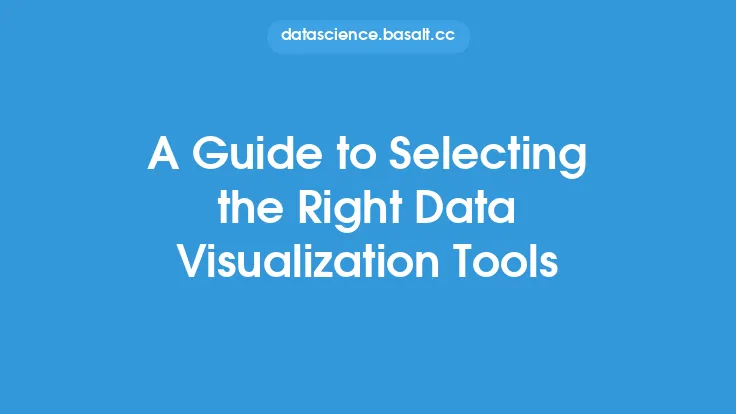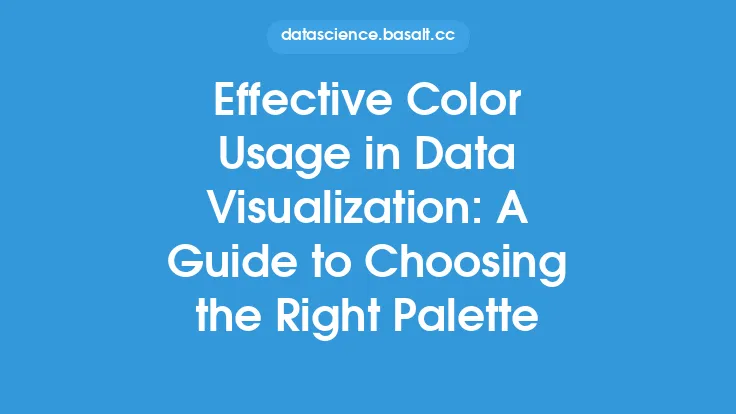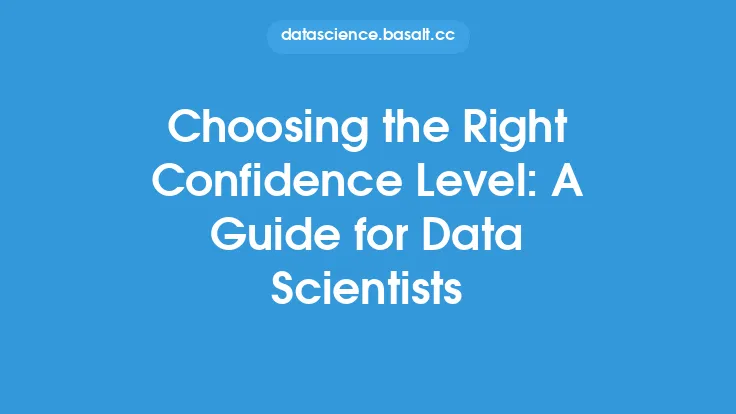When it comes to data visualization, choosing the right tool can be a daunting task. With so many options available, each with its own strengths and weaknesses, it's essential to have a clear understanding of what you need and what you're looking for. In this article, we'll delve into the world of data visualization tools, exploring the key factors to consider when selecting the right tool for your needs.
Introduction to Data Visualization Tools
Data visualization tools are software applications that enable users to create interactive and dynamic visualizations of data. These tools can range from simple charting libraries to complex data analytics platforms, and are used in a variety of fields, including business, science, and education. The primary goal of data visualization tools is to help users gain insights and understanding from data, by presenting it in a clear and concise manner.
Types of Data Visualization Tools
There are several types of data visualization tools available, each with its own unique characteristics and use cases. Some of the most common types of data visualization tools include:
- Charting libraries: These are lightweight libraries that provide a range of pre-built chart types, such as bar charts, line charts, and scatter plots.
- Data analytics platforms: These are comprehensive platforms that provide a range of data analysis and visualization tools, including data mining, predictive analytics, and data visualization.
- Business intelligence tools: These are software applications that provide business users with self-service analytics and data visualization capabilities, enabling them to create reports, dashboards, and visualizations.
- Specialized data visualization tools: These are tools that are designed for specific use cases, such as geospatial visualization, network visualization, or text analysis.
Key Features to Consider
When choosing a data visualization tool, there are several key features to consider. These include:
- Data connectivity: The ability to connect to a range of data sources, including databases, spreadsheets, and cloud-based storage.
- Data processing: The ability to handle large datasets, perform data transformations, and execute complex queries.
- Visualization capabilities: The range of visualization types available, including charts, tables, maps, and more.
- Interactivity: The ability to interact with visualizations, including filtering, drilling down, and hovering.
- Customization: The ability to customize visualizations, including colors, fonts, and layouts.
- Collaboration: The ability to share visualizations, collaborate with others, and integrate with other tools and platforms.
Technical Requirements
In addition to the key features mentioned above, there are several technical requirements to consider when choosing a data visualization tool. These include:
- Programming languages: The programming languages supported by the tool, including JavaScript, Python, R, and SQL.
- Data formats: The data formats supported by the tool, including CSV, JSON, and XML.
- Operating systems: The operating systems supported by the tool, including Windows, macOS, and Linux.
- Browser compatibility: The browsers supported by the tool, including Chrome, Firefox, and Safari.
- Mobile support: The ability to access and interact with visualizations on mobile devices.
Evaluation Criteria
When evaluating data visualization tools, there are several criteria to consider. These include:
- Ease of use: The ease with which users can create and interact with visualizations.
- Performance: The speed and efficiency with which the tool can handle large datasets and complex queries.
- Scalability: The ability of the tool to handle increasing amounts of data and user traffic.
- Security: The measures in place to ensure the security and integrity of data, including authentication, authorization, and encryption.
- Support: The level of support provided by the vendor, including documentation, tutorials, and customer support.
Best Practices for Implementation
Once you've selected a data visualization tool, there are several best practices to keep in mind when implementing it. These include:
- Start small: Begin with a small pilot project to test the tool and refine your approach.
- Define clear goals: Establish clear goals and objectives for your data visualization project.
- Choose the right data: Select the right data for your visualization, including the type, quality, and quantity.
- Design for usability: Design your visualizations with usability in mind, including clear and concise labeling, intuitive navigation, and minimal clutter.
- Test and refine: Test your visualizations with real users and refine your approach based on feedback and results.
Common Challenges and Limitations
When working with data visualization tools, there are several common challenges and limitations to be aware of. These include:
- Data quality issues: Poor data quality can lead to inaccurate or misleading visualizations.
- Complexity: Complex data and visualizations can be difficult to understand and interpret.
- Scalability: Large datasets and high user traffic can put a strain on tool performance and scalability.
- Security: Ensuring the security and integrity of data is a critical challenge in data visualization.
- User adoption: Encouraging user adoption and engagement with data visualizations can be a challenge.
Future Directions and Trends
The field of data visualization is constantly evolving, with new tools, technologies, and techniques emerging all the time. Some of the future directions and trends in data visualization include:
- Artificial intelligence and machine learning: The use of AI and ML to automate and enhance data visualization.
- Virtual and augmented reality: The use of VR and AR to create immersive and interactive data visualizations.
- Big data and IoT: The use of data visualization to make sense of large datasets and IoT sensor data.
- Cloud-based platforms: The use of cloud-based platforms to provide scalable and on-demand data visualization capabilities.
- Collaboration and sharing: The use of data visualization to facilitate collaboration and sharing across teams and organizations.





